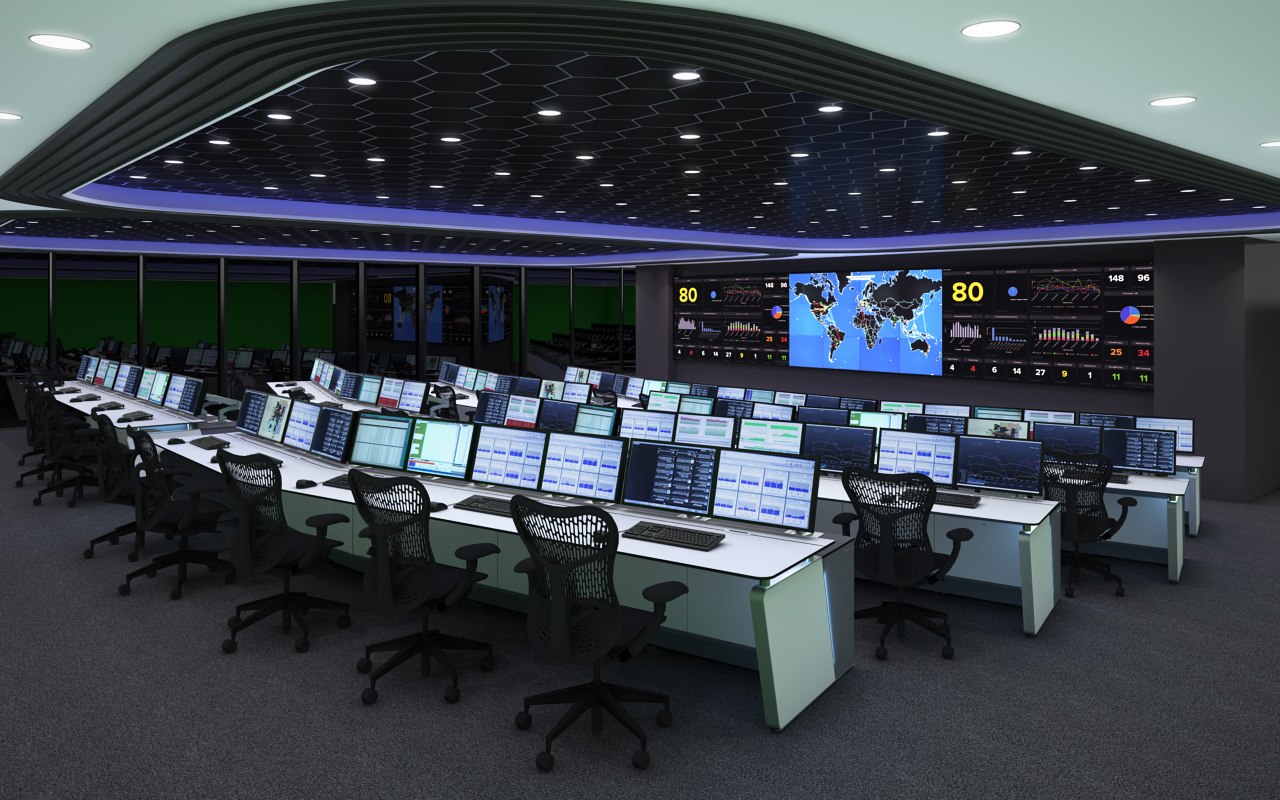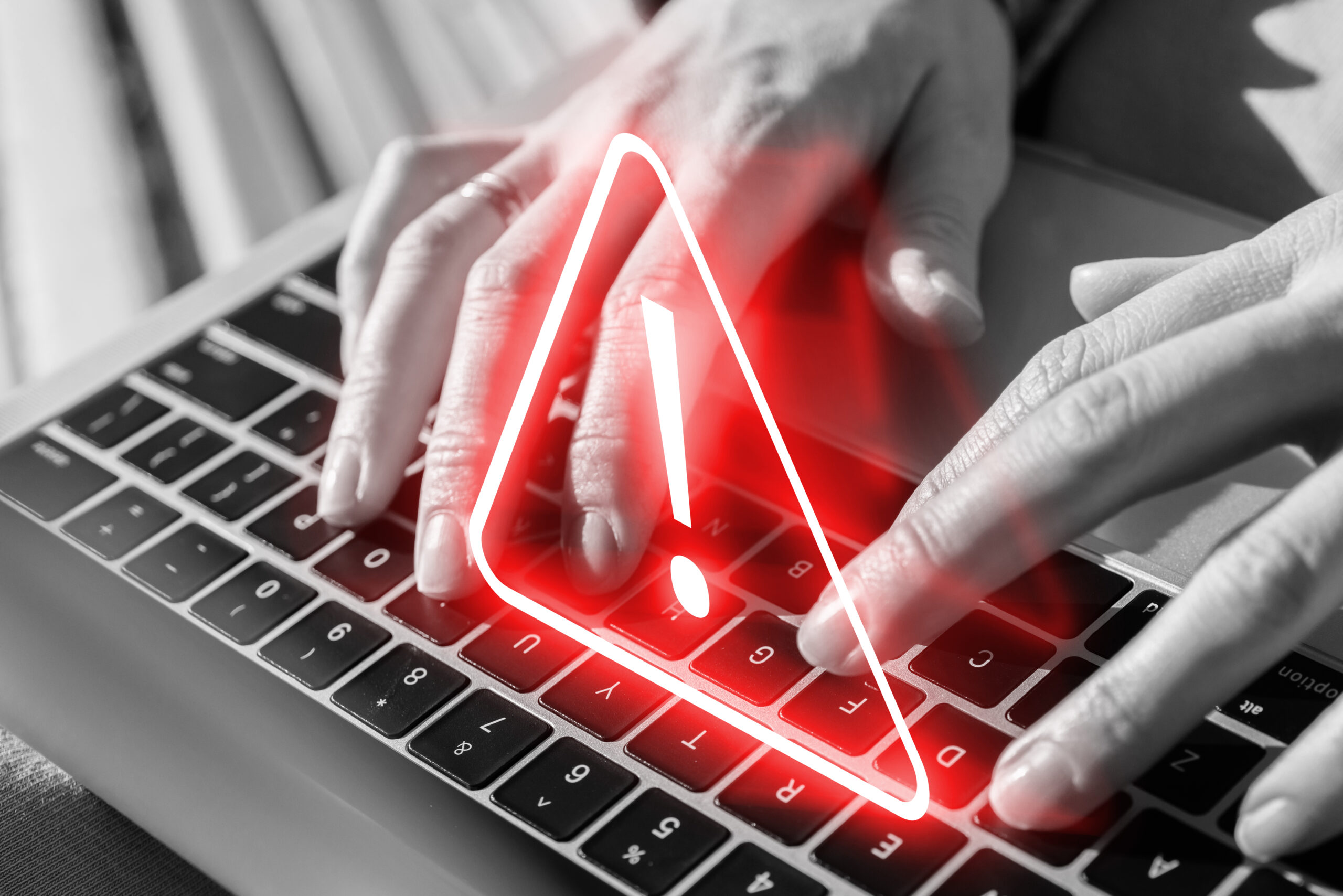NOC-SOC
24/7 Monitoring
Continuous monitoring of IT infrastructure is essential for maintaining optimal performance and ensuring the smooth functioning of business operations. At Anemoi Technologies, our NOC provides round-the-clock monitoring of clients’ networks, servers, and applications. Our 24/7 monitoring services include:

1. Network Monitoring
Our NOC team continuously monitors network performance, including bandwidth usage, latency, and packet loss. We use advanced monitoring tools to detect anomalies and potential issues in real-time. By monitoring network traffic and performance metrics, we ensure that your network remains reliable and efficient.

2. Server Monitoring
Servers are critical components of IT infrastructure, and their performance directly impacts business operations. Our server monitoring services include tracking server health, resource utilization, and performance metrics. We monitor CPU usage, memory usage, disk space, and other key indicators to ensure that servers are running optimally.

3. Application Monitoring
Business applications are essential for day-to-day operations, and any downtime can have significant consequences. Our application monitoring services include tracking application performance, response times, and error rates. We use application performance monitoring (APM) tools to detect issues and ensure that applications are running smoothly.

4. Alerting and Notifications
When potential issues are detected, our NOC team is immediately alerted. We use automated alerting systems to notify our team of any anomalies or performance degradation. Our team responds promptly to address issues and prevent disruptions to your operations.

5. Dashboard and Reporting
Our NOC provides clients with access to real-time dashboards and detailed reports. These dashboards display key performance metrics and provide insights into the health of your IT infrastructure. Our reports include performance trends, incident summaries, and recommendations for improvement.
By providing 24/7 monitoring, Anemoi Technologies ensures that any issues with your IT infrastructure are detected and addressed promptly. Our continuous monitoring services help you maintain optimal performance and minimize downtime.
Incident Management
Effective incident management is crucial for minimizing downtime and ensuring business continuity. At Anemoi Technologies, our NOC team handles incident management, including identifying, diagnosing, and resolving IT issues. Our incident management services include:
- Incident Detection: The first step in incident management is detecting potential issues. Our NOC team uses advanced monitoring tools to detect anomalies and performance degradation in real-time. We identify incidents such as network outages, server failures, and application errors promptly.
- Incident Diagnosis: Once an incident is detected, our team conducts a thorough diagnosis to determine the root cause. We use diagnostic tools and techniques to analyze performance data, logs, and other relevant information. Our goal is to identify the underlying issue quickly and accurately.
- Incident Resolution: After diagnosing the issue, our team takes immediate action to resolve it. We implement effective solutions to restore normal operations and minimize downtime. Our incident resolution process includes applying patches, reconfiguring systems, and performing necessary repairs.
- Incident Escalation: For complex issues that require specialized expertise, our NOC team follows a well-defined escalation process. We escalate incidents to the appropriate technical experts or vendors to ensure timely resolution. Our escalation process ensures that critical issues are addressed promptly and effectively.
- Incident Documentation: Documenting incidents is essential for improving incident management processes and preventing future occurrences. Our NOC team maintains detailed records of all incidents, including detection, diagnosis, resolution, and lessons learned. We use this documentation to identify trends and implement preventive measures.
- Post-Incident Review: After resolving an incident, our team conducts a post-incident review to evaluate the effectiveness of the response. We analyze the incident, identify areas for improvement, and implement corrective actions. Our post-incident reviews help us continuously improve our incident management processes.
By providing comprehensive incident management services, Anemoi Technologies ensures that IT issues are resolved quickly and efficiently. Our incident management services help you minimize downtime, maintain business continuity, and improve overall IT performance.
Performance Optimization
Optimizing the performance of IT infrastructure is essential for enhancing efficiency and ensuring a seamless user experience. At Anemoi Technologies, our NOC team continuously monitors and optimizes the performance of clients’ IT infrastructure. Our performance optimization services include:
1. Proactive Maintenance
Regular maintenance is essential for keeping IT systems running smoothly. Our proactive maintenance services include applying software updates, firmware upgrades, and system patches. We perform routine checks and maintenance tasks to ensure that your IT infrastructure is always up-to-date and performing optimally.
2. Performance Tuning
Optimizing the performance of IT systems requires continuous monitoring and tuning. Our performance tuning services include analyzing performance metrics, identifying bottlenecks, and implementing optimization techniques. We use performance profiling tools to pinpoint areas that need improvement and make necessary adjustments to enhance performance.
3. Capacity Planning
Ensuring that your IT infrastructure can handle current and future workloads is essential for maintaining performance. Our capacity planning services include analyzing resource utilization, forecasting future demand, and planning for capacity upgrades. We ensure that your IT infrastructure is scalable and capable of supporting your business growth.
4. Resource Optimization
Efficient use of IT resources is crucial for maximizing performance and reducing costs. Our resource optimization services include monitoring resource usage, identifying inefficiencies, and implementing cost-saving measures. We use advanced tools and techniques to ensure that your IT resources are used effectively and efficiently.
5. Load Balancing
Distributing workloads evenly across IT resources is essential for maintaining performance and preventing bottlenecks. Our load balancing services include implementing and managing load balancers to ensure that workloads are distributed evenly. We monitor load balancer performance and make necessary adjustments to optimize resource utilization.
6. Performance Reporting
Providing insights into the performance of your IT infrastructure is essential for making informed decisions. Our performance reporting services include generating detailed reports that highlight key performance metrics, trends, and recommendations for improvement. We provide clients with access to real-time dashboards and performance reports to help them monitor and optimize their IT infrastructure.
By providing comprehensive performance optimization services, Anemoi Technologies ensures that your IT infrastructure is always running at its best. Our performance optimization services help you enhance efficiency, improve user experience, and achieve your business goals.
Threat Detection and Response
Protecting your IT environment from security threats is essential for maintaining the integrity and confidentiality of your data. At Anemoi Technologies, our SOC team monitors clients’ IT environments for potential security threats and responds to incidents promptly. Our threat detection and response services include:
- Threat Hunting: Proactively searching for potential security threats is essential for staying ahead of cybercriminals. Our threat hunting services include analyzing security data, identifying anomalies, and investigating suspicious activities. We use advanced threat hunting tools and techniques to detect and mitigate threats before they can cause harm.
- Incident Response: Responding to security incidents promptly is crucial for minimizing damage and ensuring business continuity. Our incident response services include detecting, analyzing, containing, and eradicating security threats. We follow a well-defined incident response process to ensure that incidents are handled efficiently and effectively.
- Forensic Analysis: Investigating security incidents thoroughly is essential for understanding the root cause and preventing future occurrences. Our forensic analysis services include collecting and analyzing digital evidence, identifying the attack vector, and determining the extent of the breach. We use advanced forensic tools and techniques to conduct detailed investigations.
- Threat Intelligence: Staying informed about the latest security threats and trends is essential for maintaining a secure IT environment. Our threat intelligence services include gathering and analyzing threat data from various sources, including threat feeds, security reports, and industry publications. We use this intelligence to enhance our threat detection and response capabilities.
- Security Incident Reporting: Documenting security incidents is essential for improving security processes and ensuring compliance. Our security incident reporting services include maintaining detailed records of all incidents, including detection, response, and lessons learned. We use this documentation to identify trends and implement preventive measures.
- Post-Incident Review: After resolving a security incident, our team conducts a post-incident review to evaluate the effectiveness of the response. We analyze the incident, identify areas for improvement, and implement corrective actions. Our post-incident reviews help us continuously improve our threat detection and response processes.
By providing comprehensive threat detection and response services, Anemoi Technologies ensures that your IT environment is protected from security threats. Our threat detection and response services help you maintain the integrity and confidentiality of your data and ensure business continuity.
Security Monitoring
Security monitoring is a critical function of the Security Operations Centre (SOC) at Anemoi Technologies. Our SOC provides continuous security monitoring to detect and mitigate security risks, ensuring that clients’ IT environments remain secure and resilient. The key components of our security monitoring services include monitoring network traffic, log analysis, and vulnerability scanning.
Monitoring Network Traffic
- Traffic Analysis: By analyzing network traffic, we can identify unusual patterns that may indicate a security threat. This includes monitoring for unexpected spikes in traffic, unusual data transfer volumes, and connections to known malicious IP addresses.
- Intrusion Detection Systems (IDS): We deploy IDS to monitor network traffic for signs of malicious activity. IDS can detect various types of attacks, such as denial-of-service (DoS) attacks, port scans, and attempts to exploit vulnerabilities. When an IDS detects a potential threat, it generates an alert for further investigation.
- Behavioral Analysis: Our SOC team uses behavioral analysis to establish a baseline of normal network activity. By comparing current traffic patterns to this baseline, we can identify deviations that may indicate a security incident. Behavioral analysis helps us detect advanced threats that may evade traditional signature-based detection methods.
- Real-Time Alerts: Continuous monitoring allows us to generate real-time alerts when suspicious activities are detected. Our SOC team responds promptly to these alerts, investigating and mitigating potential threats before they can cause harm.
Log Analysis
- Log Collection: We use centralized log management systems to collect logs from multiple sources. This ensures that all relevant data is available for analysis and helps us identify correlations between different events.
- Log Parsing and Normalization: Logs from different sources may have varying formats. Our SOC team uses log parsing and normalization techniques to standardize log data, making it easier to analyze and correlate events.
- Event Correlation: By correlating events from different logs, we can identify patterns that may indicate a security incident. For example, a failed login attempt followed by a successful login from the same IP address may indicate a brute-force attack.
- Anomaly Detection: Log analysis helps us detect anomalies that may indicate a security threat. This includes identifying unusual login times, access to sensitive data, and changes to system configurations. Anomaly detection allows us to identify potential threats that may not trigger traditional security alerts.
- Forensic Analysis: In the event of a security incident, log analysis provides valuable data for forensic investigations. Our SOC team uses logs to reconstruct the sequence of events, identify the attack vector, and determine the extent of the breach.
Vulnerability Scanning
- Automated Scanning: We use automated vulnerability scanning tools to scan networks, servers, and applications for known vulnerabilities. These tools compare the scanned environment against a database of known vulnerabilities and generate reports on potential security weaknesses.
- Patch Management: When vulnerabilities are identified, our SOC team works with clients to implement patches and updates. Patch management ensures that vulnerabilities are addressed promptly, reducing the risk of exploitation.
- Configuration Management: In addition to scanning for software vulnerabilities, we also assess system configurations for security weaknesses. This includes checking for misconfigurations, weak passwords, and unnecessary services that may pose a security risk.
- Continuous Monitoring: Vulnerability scanning is not a one-time activity. Our SOC team conducts regular scans to ensure that new vulnerabilities are identified and addressed promptly. Continuous monitoring helps us maintain a secure IT environment and stay ahead of emerging threats.
Compliance Management
Implementing Security Controls
- Risk Assessment: The first step in implementing security controls is conducting a risk assessment. Our SOC team identifies potential risks to the client’s IT environment and evaluates their impact and likelihood. This assessment helps us prioritize security controls based on the client’s specific risk profile.
- Control Selection: Based on the risk assessment, we select appropriate security controls to mitigate identified risks. This includes technical controls (e.g., firewalls, encryption), administrative controls (e.g., policies, procedures), and physical controls (e.g., access controls, surveillance).
- Control Implementation: Our SOC team works with clients to implement the selected security controls. This includes configuring security devices, deploying security software, and establishing security policies and procedures. We ensure that security controls are integrated seamlessly into the client’s IT environment.
- Control Testing: After implementing security controls, we conduct testing to ensure their effectiveness. This includes vulnerability assessments, penetration testing, and security audits. Testing helps us identify any gaps in the security controls and make necessary adjustments.
Conducting Regular Audits
- Audit Planning: The first step in conducting an audit is planning. Our SOC team works with clients to define the scope of the audit, identify relevant regulations and standards, and establish audit objectives. This planning ensures that the audit is thorough and focused on the client’s specific compliance requirements.
- Audit Execution: During the audit, our SOC team assesses the client’s IT environment against the defined compliance requirements. This includes reviewing security controls, analyzing logs, and conducting interviews with key personnel. We use a combination of automated tools and manual techniques to ensure a comprehensive assessment.
- Audit Reporting: After completing the audit, we provide clients with a detailed audit report. This report includes findings, recommendations, and an action plan for addressing any identified compliance gaps. Our audit reports help clients understand their compliance status and take necessary actions to achieve and maintain compliance.
- Remediation Support: Achieving compliance often requires addressing identified gaps and implementing corrective actions. Our SOC team provides remediation support to help clients implement the recommended changes. This includes updating security controls, revising policies and procedures, and conducting follow-up assessments to ensure compliance.
- Continuous Improvement: Compliance is an ongoing process that requires continuous improvement. Our SOC team works with clients to establish a culture of continuous improvement, ensuring that security controls and compliance practices are regularly reviewed and updated. This proactive approach helps clients stay compliant with evolving regulations and standards.

